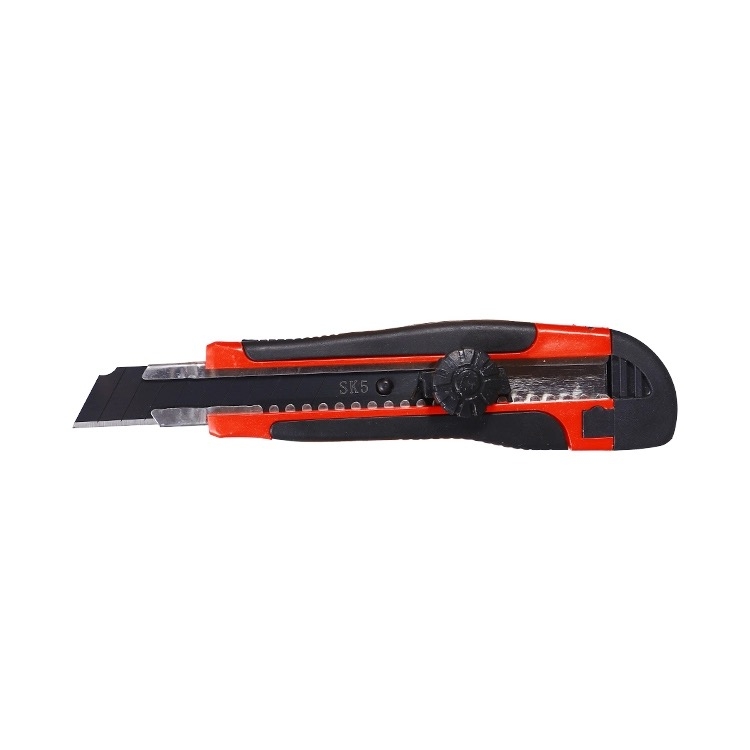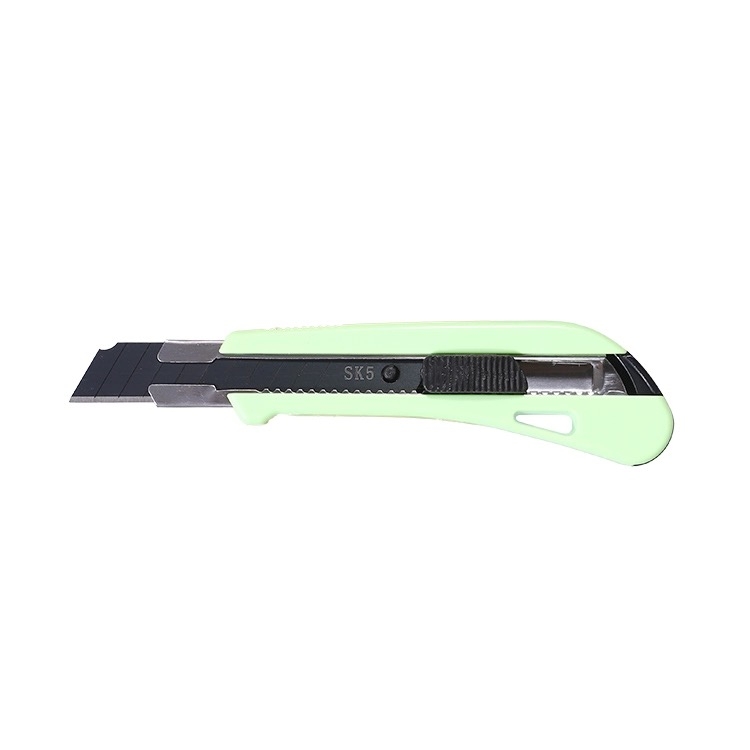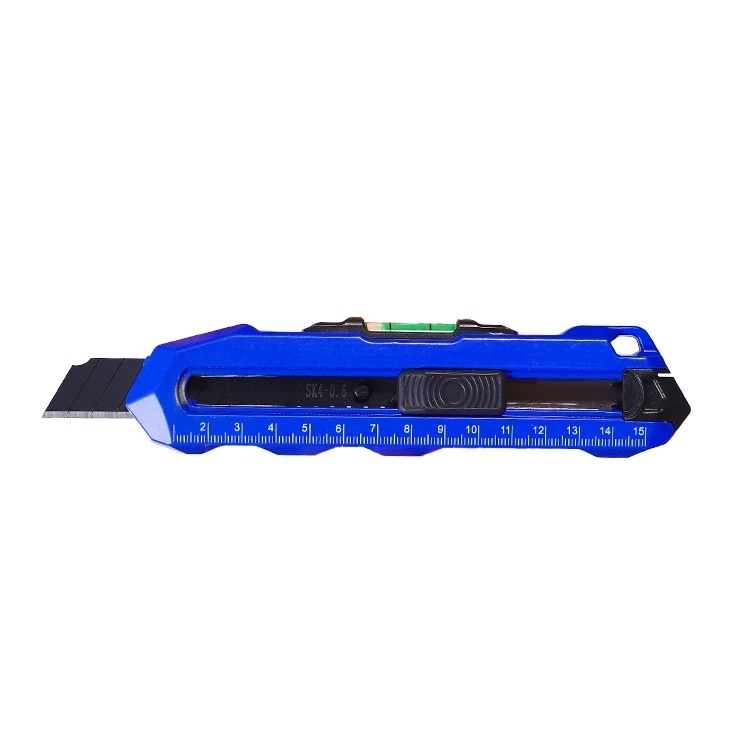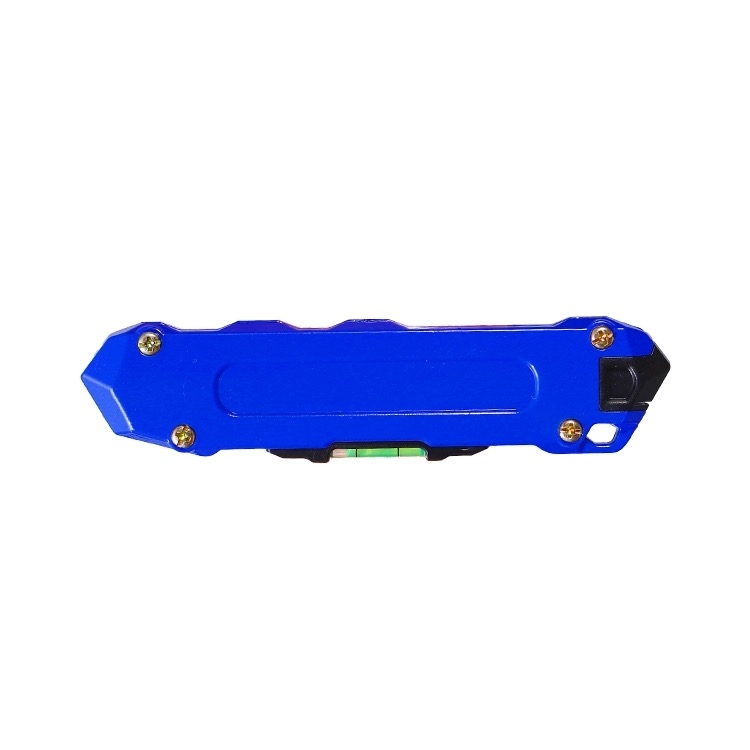Utility knives are indispensable tools that serve a multitude of purposes in various settings, from home improvement projects to professional construction sites. Their versatility, ease of use, and efficiency make them a staple in every toolbox. This article explores the significance of utility knives, their various types, and the reasons why they are essential for anyone who engages in DIY projects or professional work.
Understanding Utility Knives
Utility knives are designed for a wide range of cutting tasks. They typically feature a retractable blade that can be extended or retracted as needed, making them safe and convenient to use. The blades are often replaceable, ensuring that users can maintain sharpness without the need for sharpening tools. This design not only enhances safety but also allows for quick blade changes, which is particularly beneficial in fast-paced environments where time is of the essence. The simplicity of their design belies their effectiveness, making them a go-to tool for both amateurs and professionals alike.
Types of Utility Knives
Utility knives come in various designs, each suited for specific tasks. Understanding these types can help users select the right knife for their needs.
Retractable Blade Utility Knives
These are the most common type of utility knives. They feature a blade that can be extended and retracted, providing safety when not in use. The retractable mechanism allows for easy blade replacement, making maintenance straightforward. This type of knife is particularly useful in environments where safety is a priority, such as schools or homes with children. The ability to retract the blade ensures that it is not exposed when the knife is stored, reducing the risk of accidental cuts.
Fixed Blade Utility Knives
Fixed blade utility knives have a blade that is permanently exposed. They are typically sturdier and can handle heavier cutting tasks. These knives are often used in professional settings where durability is crucial. The fixed blade design provides a sense of stability and strength, making them ideal for cutting through tougher materials like thick cardboard, leather, or even some types of wood. Professionals in construction or landscaping often prefer fixed blade knives for their reliability in demanding conditions.

Folding Utility Knives
Folding utility knives combine the convenience of a retractable blade with a compact design. They can be folded for easy storage and transport, making them ideal for those who need a portable cutting tool. This feature is particularly advantageous for tradespeople who travel to different job sites or for outdoor enthusiasts who require a lightweight tool that can fit easily in a pocket or backpack. The folding mechanism also adds an extra layer of safety, as the blade is concealed when not in use.
Multi-Tool Utility Knives
These knives come equipped with additional features, such as screwdrivers, pliers, or scissors. Multi-tool utility knives are perfect for users who want an all-in-one solution for various tasks. The versatility of multi-tools makes them particularly appealing for those who engage in a variety of activities, from camping to home repairs. By having multiple tools in one device, users can save space in their toolbox and reduce the number of individual tools they need to carry.
The Versatility of Utility Knives
One of the primary reasons utility knives are essential is their versatility. They can be used for a wide range of applications, making them suitable for both professionals and DIY enthusiasts.
Cutting and Trimming
Utility knives excel at cutting through various materials, including cardboard, plastic, rope, and even thin wood. This makes them invaluable for packaging, crafting, and construction tasks. The sharpness of the blade allows for clean cuts, which is essential in ensuring that materials fit together properly in projects. Whether you are assembling furniture, crafting models, or simply opening packages, a utility knife can make the process smoother and more efficient.
Opening Packages
In both home and professional environments, utility knives are often used to open boxes and packages. Their sharp blades make quick work of tape and cardboard, saving time and effort. This is particularly important in retail settings, where employees need to unpack shipments quickly to restock shelves. The efficiency of a utility knife can significantly speed up operations, allowing for a more streamlined workflow.
Scraping and Scoring
Utility knives can also be used for scraping surfaces or scoring materials. This is particularly useful in tasks such as removing paint, adhesive, or other stubborn residues. The ability to score materials allows users to create clean lines for cutting, which is essential in tasks like tiling or drywall installation. Additionally, scraping can prepare surfaces for painting or finishing, ensuring that the final product looks professional.
Precision Cutting
For projects that require precision, utility knives can provide the control needed to make clean cuts. This is especially important in crafting, model building, and other detailed work. The fine point of a utility knife allows for intricate cuts that larger tools cannot achieve. Crafters and artists often rely on utility knives for their ability to handle delicate materials, such as paper or fabric, without causing damage.

Safety Features of Utility Knives
Safety is a significant concern when using cutting tools. Utility knives are designed with several features to enhance user safety.
Retractable Blades
The retractable blade feature minimizes the risk of accidental cuts when the knife is not in use. Users can extend the blade only when needed, reducing exposure to sharp edges. This design is particularly beneficial in environments where multiple people may be using the tool, as it helps prevent injuries. The retractable mechanism also encourages users to adopt safer habits, as they are reminded to retract the blade after each use.
Blade Lock Mechanisms
Many utility knives come with a blade lock mechanism that secures the blade in place during use. This prevents the blade from retracting unexpectedly, ensuring a safer cutting experience. The lock mechanism is crucial for maintaining control while cutting, especially when working with tougher materials that require more force. Users can focus on their task without worrying about the blade shifting or retracting mid-cut.
Ergonomic Handles
Utility knives often feature ergonomic handles that provide a comfortable grip. This reduces hand fatigue during extended use and allows for better control over the cutting process. A well-designed handle can make a significant difference in the user experience, especially for those who use utility knives frequently. The comfort of the handle can enhance precision and reduce the likelihood of accidents caused by slipping or losing grip.

Maintenance and Care of Utility Knives
To ensure longevity and optimal performance, proper maintenance of utility knives is essential.
Regular Blade Replacement
Dull blades can lead to accidents and ineffective cutting. Regularly replacing blades ensures that the utility knife remains sharp and functional. Users should be aware of the signs of dullness, such as difficulty cutting through materials or the need to apply excessive force. Keeping a supply of replacement blades on hand can help users maintain their tools and ensure they are always ready for use.
Cleaning
After use, utility knives should be cleaned to remove any debris or residue. This prevents the buildup of materials that could affect the knife's performance. Cleaning not only enhances the knife's functionality but also prolongs its lifespan. Users should take care to clean the blade and handle, ensuring that no sticky substances or dirt interfere with the knife's operation.
Safe Storage
When not in use, utility knives should be stored safely. Keeping them in a designated toolbox or sheath protects the blades and prevents accidental injuries. Proper storage also helps maintain the sharpness of the blades, as they are less likely to become dull from contact with other tools. Users should consider investing in a dedicated storage solution that keeps their utility knives organized and easily accessible.
Conclusion
Utility knives are essential tools that offer versatility, safety, and efficiency for a wide range of tasks. Their ability to cut, scrape, and score various materials makes them invaluable in both professional and DIY settings. By understanding the different types of utility knives and their applications, users can select the right tool for their needs. Proper maintenance and care further enhance the utility knife's lifespan, ensuring it remains a reliable companion in any toolbox. Whether you are a seasoned professional or a casual DIYer, a utility knife is a must-have tool that can simplify your projects and enhance your productivity. The investment in a quality utility knife pays off in the long run, as it becomes an essential part of your toolkit, ready to tackle any challenge that comes your way.

Frequently Asked Questions regarding Utility Knives
1. What materials can utility knives cut through?
Utility knives are designed to cut through a variety of materials, including cardboard, plastic, rope, carpet, and thin wood. Their sharp blades make them effective for both light and heavy-duty cutting tasks.
2. How do I safely replace the blade on a utility knife?
To safely replace the blade, first ensure the knife is closed or the blade is retracted. Follow the manufacturer's instructions for your specific model, which usually involves pressing a release button or sliding a mechanism to remove the old blade. Insert the new blade securely and ensure it is locked in place before using the knife.
3. Are utility knives suitable for precision cutting?
Yes, utility knives are excellent for precision cutting. Their sharp, fine-point blades allow for detailed work, making them ideal for tasks such as crafting, model building, and other intricate projects.
4. How can I maintain my utility knife for optimal performance?
To maintain your utility knife, regularly replace dull blades, clean the knife after each use to remove debris, and store it safely in a designated toolbox or sheath. Keeping the knife clean and properly stored helps prolong its lifespan and ensures it remains effective.
5. What safety precautions should I take when using a utility knife?
When using a utility knife, always cut away from your body, use a cutting mat or surface to protect your work area, and ensure the blade is retracted when not in use. Additionally, consider wearing cut-resistant gloves for added protection, especially during heavy-duty tasks.






